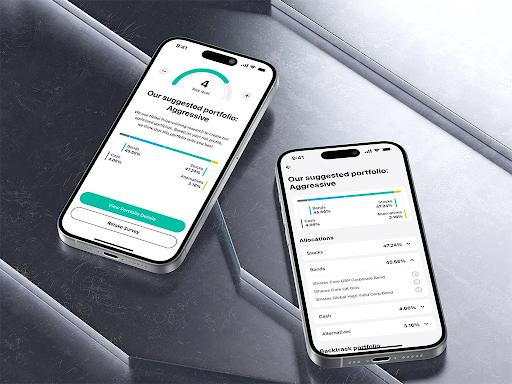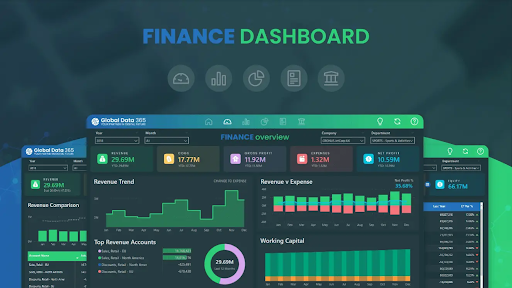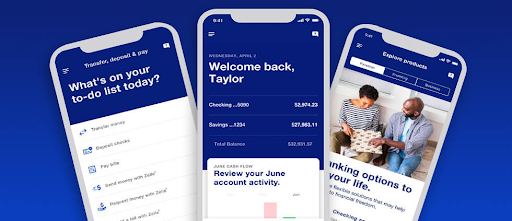For many U.S. residents, the thought of investing can be daunting. Complex market analysis, portfolio diversification, and continuous monitoring often lead to procrastination or reliance on expensive human advisors. This is where robo-advisor apps have emerged as a revolutionary solution. These intelligent finance technology apps leverage sophisticated algorithms to provide automated, personalized investment management, making wealth building accessible and affordable for a wider audience.
As of mid-2025, robo-advisor apps have solidified their position as a mainstream investment option in the U.S. They’ve evolved beyond basic automated portfolios to offer a range of features, from tax optimization to access to human financial planners. Let’s explore how these apps work, their compelling benefits, and some of the top platforms shaping the future of investing.
What Are Robo-Advisor Apps and How Do They Work?
At their core, robo-advisor apps are digital platforms that provide automated financial planning and investment management with minimal human intervention. Here’s a simplified breakdown of how they operate:
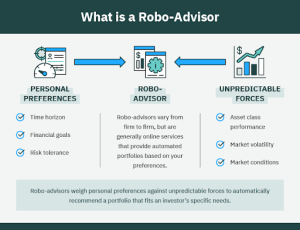
- Onboarding Questionnaire: When you sign up, the app asks a series of questions about your financial goals (e.g., retirement, homeownership, general wealth growth), time horizon, and, crucially, your risk tolerance.
- Portfolio Construction: Based on your answers, the robo-advisor’s algorithms create a diversified investment portfolio tailored to your profile. These portfolios typically consist of low-cost Exchange Traded Funds (ETFs) or mutual funds that track broad market indexes (e.g., U.S. stocks, international stocks, bonds).
- Automated Management: Once your portfolio is set up and funded, the robo-advisor takes over. It automatically:
- Invests Your Deposits: Allocates new contributions according to your target asset allocation.
- Rebalances Your Portfolio: Over time, market fluctuations can cause your portfolio’s asset allocation to drift from its original target. Robo-advisors automatically rebalance, selling off overperforming assets and buying underperforming ones to maintain your desired risk level.
- Reinvests Dividends: Any dividends earned from your investments are automatically reinvested back into your portfolio, accelerating growth through compounding.
- Tax-Loss Harvesting (for taxable accounts): Some advanced robo-advisors employ this strategy to sell investments at a loss to offset capital gains and even a portion of ordinary income, potentially lowering your tax bill.
The Compelling Benefits of Robo-Advisor Apps
Robo-advisor apps offer significant advantages, particularly for cost-conscious investors and those seeking a hands-off approach:
- Lower Fees: This is arguably the biggest draw. Robo-advisors typically charge an annual management fee as a percentage of your assets under management (AUM), ranging from around 0.25% to 0.50% (e.g., $25 to $50 annually for every $10,000 invested). This is significantly less than traditional human financial advisors who often charge 1% or more.
- Accessibility & Low Minimums: Many robo-advisors have very low or no account minimums, making professional-grade investment management accessible to virtually anyone, including beginners with modest savings.
- Automation & Convenience: The “set it and forget it” nature of robo-advisors frees up your time and removes the emotional aspect of investing. The algorithms handle the heavy lifting, ensuring your portfolio stays aligned with your goals.
- Diversification: Robo-advisors inherently build diversified portfolios using low-cost ETFs across various asset classes, which is crucial for managing risk and maximizing long-term returns.
- Goal-Based Investing: They excel at helping you invest towards specific financial goals like retirement, a down payment, or college savings, providing clear progress tracking.
- Emotion-Free Investing: Algorithms don’t panic during market downturns or get overconfident during booms. They stick to a predetermined strategy, helping investors avoid common behavioral mistakes.
- Tax Efficiency: Many offer tax-loss harvesting for taxable accounts, which can significantly enhance after-tax returns.
- Transparency: Fees, investment allocations, and performance are typically clearly outlined within the app.
Top Robo-Advisor Apps for U.S. Investors
The U.S. market boasts several excellent robo-advisor apps, each with unique strengths:
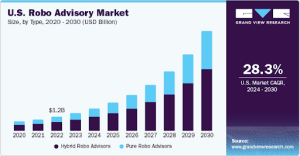
- Betterment:
- Best For: Overall comprehensive robo-advisory, goal planning, and tax optimization.
- Key Features: Automated investing, tax-loss harvesting, flexible goal setting, cash management accounts, and access to human advisors for a higher fee tier.
- Fees: 0.25% for balances up to $100,000; 0.40% for premium (includes human access).
- Wealthfront:
- Best For: Sophisticated tax-loss harvesting, comprehensive financial planning tools, and a strong focus on automation.
- Key Features: Automated investing, advanced daily tax-loss harvesting, direct indexing, portfolio line of credit, and integrated high-yield cash accounts.
- Fees: 0.25% annual advisory fee. Minimum $500 to start investing.
- Fidelity Go:
- Best For: Low costs, especially for smaller balances, and integration with a major brokerage.
- Key Features: No advisory fee for balances under $25,000; then 0.35% for balances above $25,000. Uses Fidelity Flex® ETFs with no expense ratios. Access to Fidelity advisors once your balance exceeds $25,000.
- Considerations: Limited direct human advice unless you upgrade or meet certain asset thresholds.
- Schwab Intelligent Portfolios:
- Best For: Zero advisory fees for its basic digital service and broad market exposure.
- Key Features: No advisory fee for the basic digital-only service. Offers automated rebalancing and access to Schwab’s research. A premium tier ($300 initial planning fee + $30/month) provides unlimited access to human CFPs.
- Considerations: Requires a $5,000 minimum investment ($25,000 for premium). Holds a significant portion of cash in some portfolios, which can impact returns in bull markets.
- SoFi Automated Investing:
- Best For: Access to licensed financial advisors and a broad suite of financial products.
- Key Features: Free access to financial planners for all clients. $0 advisory fees (SoFi makes money from other services and underlying fund fees). Integrates with SoFi’s banking, lending, and other offerings.
- Considerations: Limited selection of ETFs compared to some competitors.
- Acorns:
- Best For: Micro-investing and automated “Round-Ups” of spare change.
- Key Features: Invests spare change from linked purchases, diversified portfolios, offers retirement (IRA) and checking accounts.
- Fees: Flat monthly fee (starts at $3/month for Personal accounts), which can be high for very small balances but offers comprehensive features for all tiers.
Regulations and Security in the U.S. Robo-Advisor Market
Robo-advisors operating in the U.S. are regulated by the Securities and Exchange Commission (SEC) and relevant state securities regulators, similar to traditional investment advisors. They must adhere to:
- Fiduciary Duty: While automated, many robo-advisors operate under a fiduciary standard, meaning they are legally obligated to act in their clients’ best interest.
- Disclosure Requirements: They must clearly disclose their fees, investment strategies, and any potential conflicts of interest.
- Security: Like all reputable financial technology apps, robo-advisors use bank-level encryption, multi-factor authentication, and robust cybersecurity protocols. Client accounts are typically insured by the Securities Investor Protection Corporation (SIPC), protecting up to $500,000 (including $250,000 for cash) in the event the brokerage firm fails.
Conclusion
Robo-advisor apps have become a cornerstone of finance technology apps in the U.S., democratizing access to professional investment management. For U.S. residents looking for an affordable, hands-off, and efficient way to build wealth, these apps offer an unparalleled solution.
By combining sophisticated algorithms with user-friendly interfaces, robo-advisors empower individuals to set and achieve their financial goals without needing deep market knowledge or a large initial investment. While they may lack the personalized human touch for complex financial situations, for most investors focused on long-term growth and smart money management, a robo-advisor app is an invaluable partner in their financial journey. Embrace the future of investing and let automation work for you.

